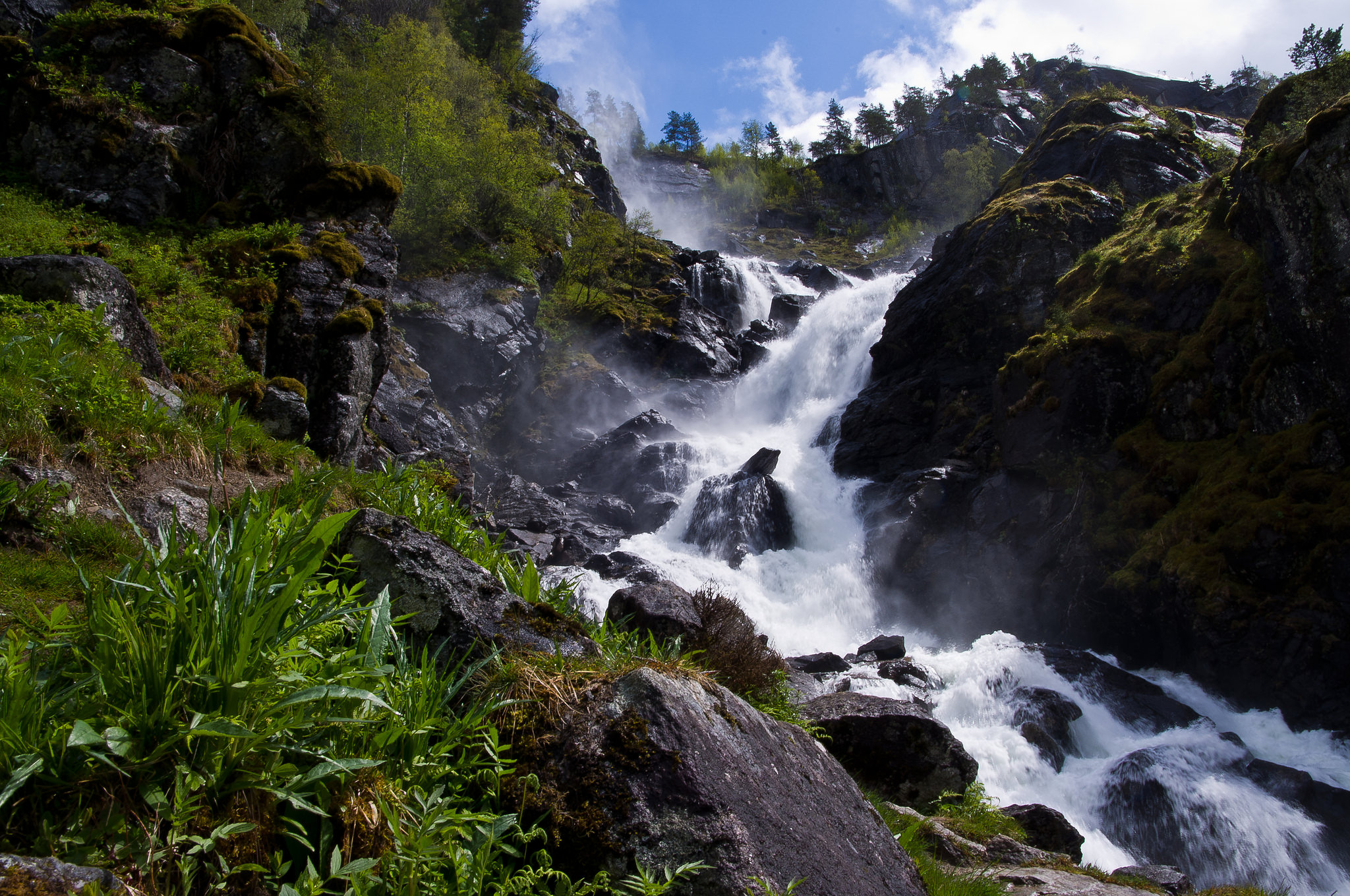A classic layer system for three-season outdoor pursuits could be something similar to this: baselayer, midlayer, insulation layer and shell. This allows you to add and remove layers depending on the weather and level of exertion to keep you body at the perfect temperature.
We’ve talked at length about ultralight down jackets as insulation layers. In this article we will have a closer look at midlayers options.
A perfect midlayer needs to be warm but more importantly breathable. Like a baselayer it is not a piece that is meant to be added or removed often during the same activity.
Your typical midlayer is a fleece jacket. Fleece is a great fabric as it lets moisture transfer to the outside very well, is very light and reasonably cheap. However it can be uncomfortable worn directly on the skin, specially when wet from perspiration, and in its most basic form does not provide any protection against wind or abrasion.
Most midlayers are not meant to be worn as the outside most layer. They usually do not provide any protection against bad weather and can be fragile. But in the current market, manufacturers are hard at work creating hybrid midlayers for every type of activity and weather conditions. Those are arguably more interesting, if more specific in their use case, than basic fleece jackets.
Midlayers fabrics
Polyester: cheap, dries quickly and effectively wicks moisture away from the skin. Fleece midlayers are usually 100% polyester.
Nylon: is as good polyester and more durable. It is often blended with other fabrics to add durability.
Wool: wool arguably makes the best fabric for next to skin apparel but it is also great used in midlayers. Its odor, temperature control and wicking properties are things a good midlayer should have. But it usually comes at a premium compared to synthetic fabrics.
We’ve made a selection of what we think are some of the best midlayers available for 2016, you will quickly see that they come in a wide variety of fabrics and types.
Smartwool Double Corbet 120 jacket
Loft in wool has only started to appear recently. When you want a natural material that will retain loft whatever the conditions, options are limited. The Smartwool Double Corbet is a classic hybrid construction. It protects the torso with a midlayer weight (120g/m2) panel while the arms and back are Nylon/Elastane lined with merino. The front panel’s face fabric is 100% polyester and DWR treated. This is a midlayer for stop-and-go cold weather activities.
We’ve tested two of those and they are our fav pick right now for cold mornings running, climbing and cycling.
Smartwool Echo Lake full zip sweater
Less technical than the Corbet, the Echo Lake is a great midlayer for cold mornings. It’s blend of Merino, Nylon and polyester uses 60% recycled wool. The Echo Lake’s understated look will also work for a casual night out which makes it a very versatile top.
Rab Power Stretch Pro
This is a technical midlayer for intense winter activities. Polartec’s Power Stretch Pro fabric is the best mid weight fabric for its durability and breathability. The Rab Power Stretch Pro jacket is slim fitting and is best worn as part of a layer system but the hood and the good weather resistance of the Polartec Stretch Pro makes it a decent outerlayer for mild conditions. 565g/20oz (size Large)
Rab Firebrand jacket
For when you are just looking for warmth and breathability, a fleece jacket like the Rab Firebrand is perfect. The use of Polartec High Loft for the warmth and Power Grid on key areas like sides, underarms and cuffs make this jacket great at keeping you warm while having optimal breathability where it matters. All this in a light weight but more fragile piece compared to the Power Stretch Pro before. 385g/14oz (size Large).
Outdoor Research Deviator hoody
The Deviator hoody is an hybrid midlayer similar to the Smartwool double corbet in its construction. The torso is insulated with the new and innovative Polartec Alpha while the sides and arms are using Polartec Power Grid. 304g/10.7oz(L)
Icebreaker MerinoLOFT Helix Zip Hood
Another of those premium and super expensive Merino midlayers. But once you’ve tested the odor resistance and climate-control of this fabric, it is hard to go back. The MerinoLOFT Helix as a polyester face fabric, recycled Merino wool blend insulation and 100% Merino next-to-skin. And it has thumbs hoops. What else do you need?
The North Face TKA 100
If you are looking at something more accessible than the Merino midlayer mentioned before, the The North Face TKA 100 is the fleece for you. A staple in TNF range, the TKA 100 is “just” a good lightweight fleece jacket with ¼ zip. Perfect for hill hikes, worn below a hard or softshell on windy days. You could buy 4 for the price of the Icebreaker Helix. 370 g (13.05 oz).
Kora Azog Hooded Jacket
Merino is not the only wool on the market. Kora has an array of base and midlayers made of yak wool on the inside and a synthetic fabric called Sorona on the outside. The Azog features a hood, thumbs-hoops and a full-length zip.
Not recommended: Patagonia R1 Hoody 2015/16 version
The climber’s midlayer. Seriously, almost everyone I know who climbs has a R1. It’s been part of Patagonia’s range for years. The new version uses Polartec Power Grid made from recycled polyester and is Bluesign certified. Unfortunately, the design of the latest version moved the zipper back to the centre. Since the 2014 version they had an asymmetric zipper which when zipped all the way up did not got to your nose. If you find an older model on sale get that one instead.










